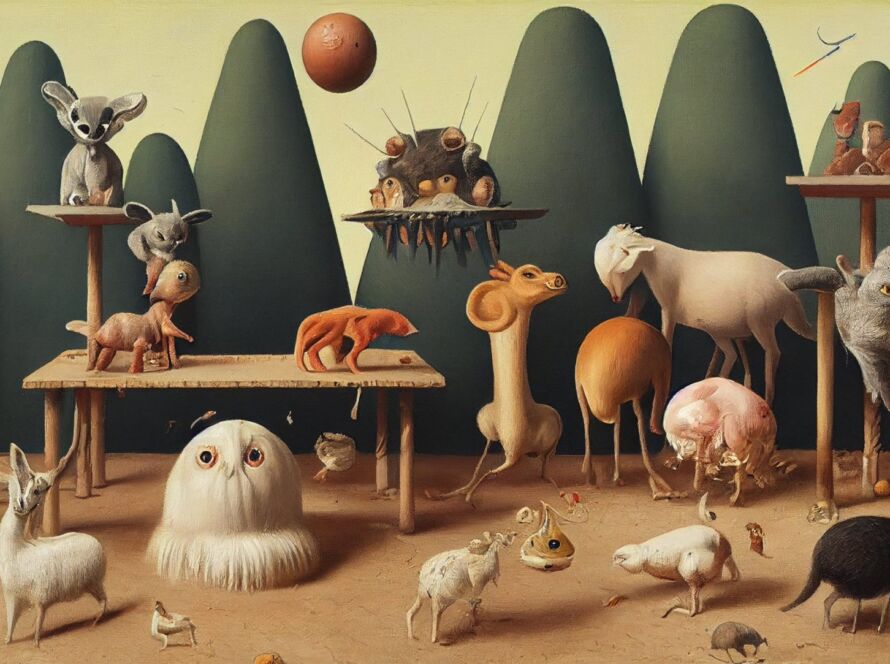The AI Art Phenomenon: How It’s Changing the Game for Business Branding
How can AI art enhance corporate aesthetics and branding?
The advent of artificial intelligence (AI) has revolutionized various industries, including art. It has given birth to a new form of artistic expression, AI art, which is making waves in the corporate world. But how exactly can it enhance corporate aesthetics and branding?
AI art has a unique, contemporary aesthetic that’s unlike any traditional form of art. It can infuse a modern and innovative vibe into your brand’s visual identity, setting you apart from competitors and aligning your brand with technology and innovation. With AI art, your company can project an image of being forward-thinking and receptive to new ideas.
AI can generate art based on your specific brand colors, style, and themes. This ability to customize and tailor AI art makes it an excellent tool for enhancing your corporate aesthetics and reinforcing your brand’s message. Whether you need artwork for your website, social media, office space, or advertising campaigns, AI art can provide visually appealing and brand-aligned pieces.
Further, AI art can help create a unique and consistent visual branding across all platforms. Consistency is key in branding, and using AI art can ensure a uniform look and feel that resonates with your audience. This consistency can lead to stronger brand recognition and loyalty.
Notably, AI art can help generate an infinite number of artworks. This scalability means you can maintain fresh, engaging aesthetics without having to commission new pieces from human artists frequently. This can be particularly useful for dynamic content platforms like social media or seasonal marketing campaigns.
Art plays a significant role in creating an emotional connection with your audience. AI art, with its uncanny ability to create stunning, emotionally resonant pieces, can help establish and strengthen this connection. By incorporating AI art that resonates with your target audience, you can deepen their emotional attachment to your brand.
Furthermore, by adopting AI art, your company can position itself at the forefront of technology and innovation, which can be attractive to potential partners, investors, and customers. It shows that your company is progressive, adaptable, and unafraid of exploring new frontiers.
Integrating AI art in your corporate aesthetics can also make your brand more relatable to the tech-savvy generation. As AI and technology continue to permeate our lives, a brand that embraces these advancements can appeal to the younger demographic.
For companies in the tech industry or those dealing with AI-based products or services, using AI art can serve as a testimonial to their belief in their products and services. It can help highlight their commitment to leveraging AI and their trust in AI’s potential.
Finally, AI art, as a part of your corporate aesthetics, can spark conversation and intrigue, making your brand more memorable. It provides an element of surprise and can act as a conversation starter, contributing to increased brand awareness and recognition.
This article on NFT54.io further elucidates on the potential of AI art in business scenarios.
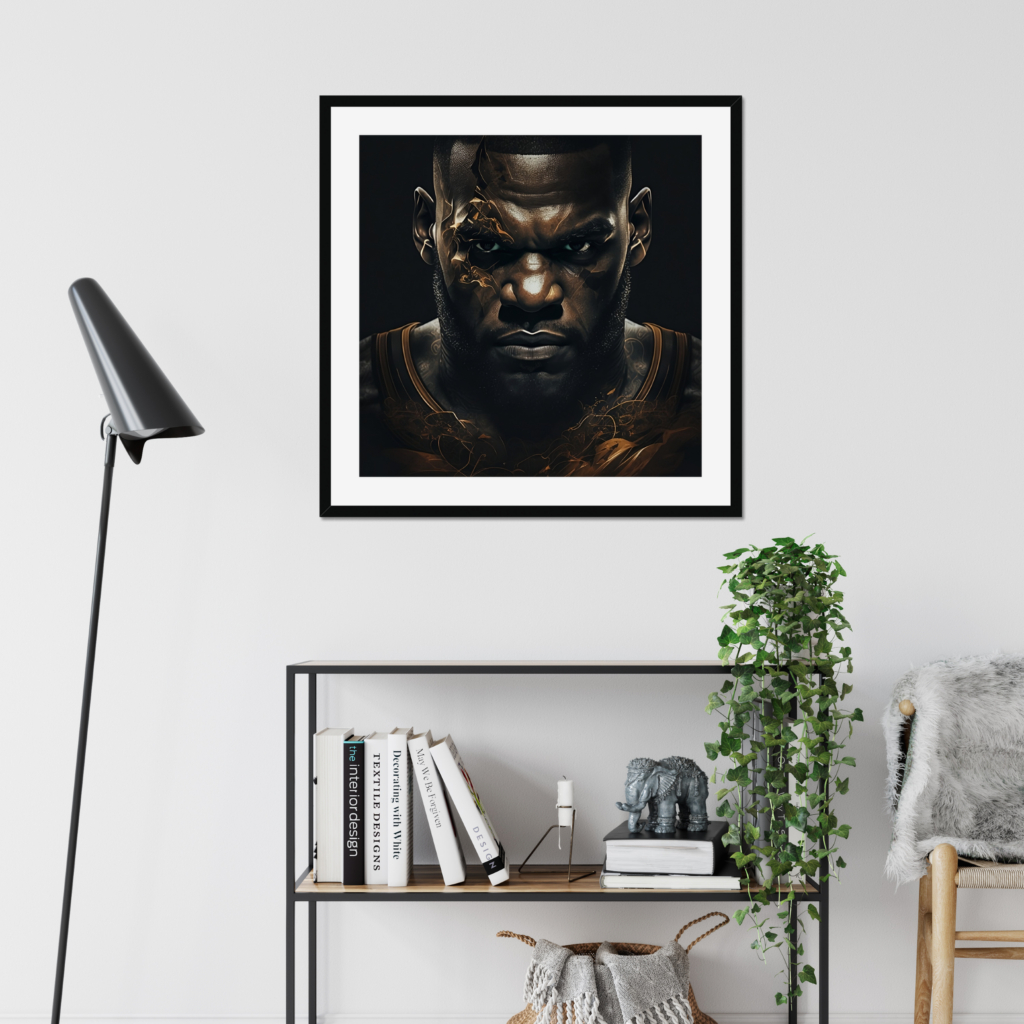
How can entrepreneurs leverage AI art for their businesses?
As the line between art and technology blurs with the emergence of AI art, entrepreneurs stand on the cusp of a revolution that could redefine their approach to branding and aesthetics. By leveraging AI art, businesses can unlock a multitude of benefits.
With AI art, entrepreneurs can obtain tailored artwork based on their unique brand identity, allowing them to convey their brand’s personality and values visually. This level of personalization ensures consistency across all platforms, a critical factor in establishing brand recognition and loyalty.
AI art is incredibly versatile and can be used in numerous applications. Entrepreneurs can incorporate AI-generated pieces into their web design, marketing collateral, product packaging, and even their physical workspaces. This consistent use of AI art helps to create a cohesive brand image.
By adopting AI art, businesses can keep their aesthetics fresh and engaging. The ability of AI to generate an infinite number of artworks allows for regular updates of visual content without the need for frequent commissions from traditional artists. This capability is particularly advantageous for dynamic platforms such as social media.
The scalability of AI art is also beneficial for businesses looking to expand. As a company grows, its need for artwork can increase exponentially. AI art can easily meet this increased demand without a significant rise in costs or time constraints.
AI art can help create an emotional connection with your target audience. By generating artwork that resonates with their values and aspirations, you can deepen their emotional engagement with your brand, leading to increased brand loyalty and customer retention.
Embracing AI art also demonstrates a company’s commitment to innovation. This can enhance your brand’s appeal to tech-savvy consumers and can send a strong signal to investors about your willingness to adapt and stay ahead of the curve.
Additionally, AI art opens up opportunities for entrepreneurs to venture into new business models, such as selling unique AI-generated artwork as NFTs. This potential for new revenue streams can be a significant advantage in the competitive business landscape.
Finally, for entrepreneurs operating in the tech industry, using AI art in their branding can highlight their alignment with technology and AI, serving as a testament to their belief in their products and services.
You can explore further on how AI art generation is revolutionizing the art industry in this comprehensive guide by NFT54.io.
What kind of AI business solutions are available through NFT54.io?
NFT54.io provides a comprehensive suite of AI business solutions designed to transform corporate aesthetics and empower entrepreneurs with the benefits of AI art.
One of NFT54.io’s key offerings is its AI Art Generator. This cutting-edge tool uses artificial intelligence to generate unique and customized artwork based on your specific requirements, such as brand colors, themes, and style.
NFT54.io also provides a platform for purchasing and selling AI-generated art as Non-Fungible Tokens (NFTs). This opens up an exciting opportunity for businesses to monetize AI art, either by selling their unique AI-generated pieces or by investing in and reselling AI art.
The company offers an AI Art Authentication service to ensure the originality and authenticity of AI-generated art. This solution can help businesses confidently purchase and use AI art, knowing that it is genuine and has not been replicated elsewhere.
For businesses looking to integrate AI art into their branding or physical spaces, NFT54.io offers a consulting service. Their team of AI art experts can guide you in choosing and using AI art to maximize its impact on your brand aesthetics and corporate environment.
Additionally, NFT54.io offers workshops and training programs on AI art, giving businesses the knowledge and skills needed to navigate this new landscape. These programs cover everything from the basics of AI art to advanced techniques and strategies for incorporating AI art into your business.
The company’s AI art solutions are not just limited to aesthetics and branding. They also include applications in areas like advertising and marketing, where AI-generated art can be used to create engaging and personalized ad content.
Businesses interested in leveraging AI for interior design can benefit from NFT54.io’s AI Art for Interior Design service. This solution allows businesses to use AI-generated art to create unique and aesthetically pleasing workspaces.
Finally, NFT54.io is continually developing new AI art solutions, ensuring that their offerings stay relevant in the rapidly evolving world of AI and art.
Discover the magic of AI art in interior design and other innovative applications of AI art on NFT54.io.
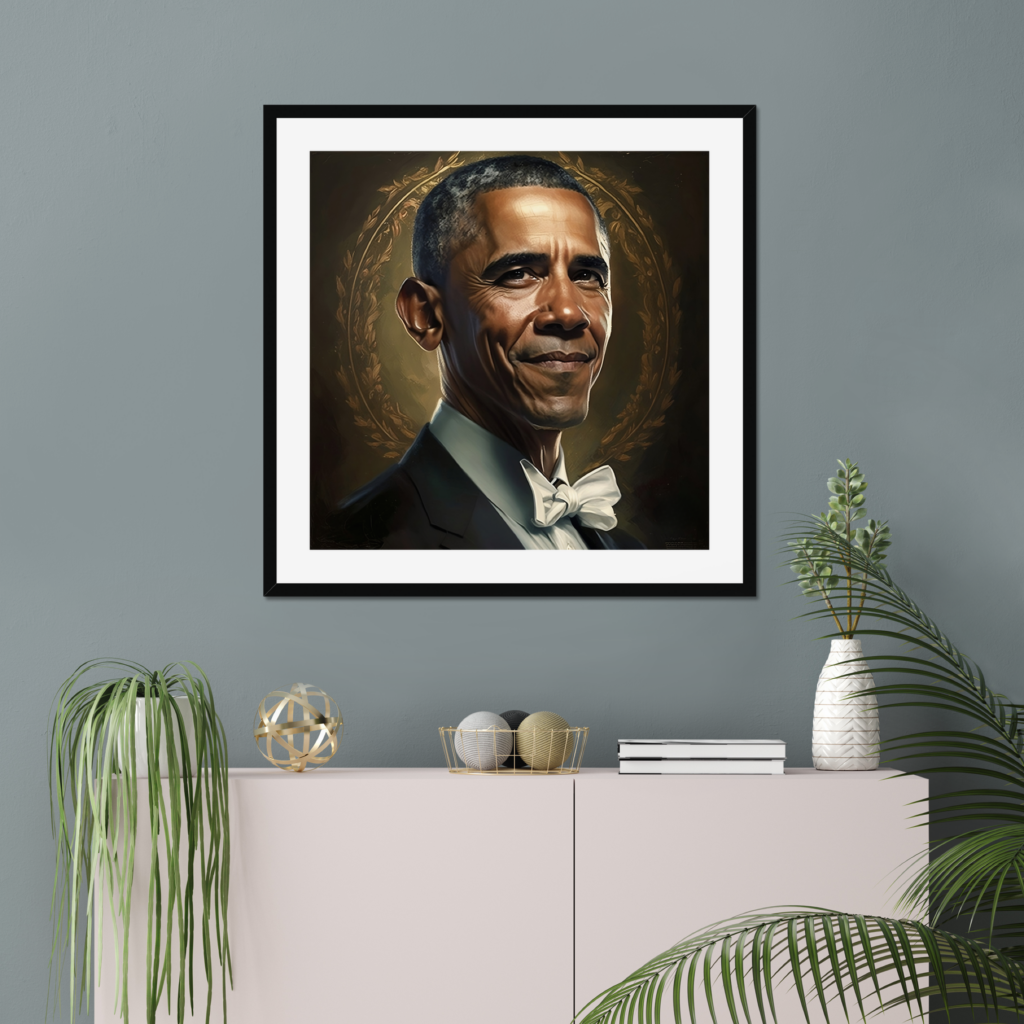
How is AI art influencing the future of corporate art?
The integration of artificial intelligence in the world of art is not just a trend, but a shift that is influencing the future of corporate art. AI art’s influence in corporate aesthetics and branding is growing significantly, bringing about a new era in the realm of corporate art.
AI art is democratizing corporate aesthetics. Before AI, custom artwork was a luxury that only big corporations could afford. Now, AI has made it possible for even small and medium-sized businesses to enjoy custom-tailored artwork, thereby leveling the playing field.
Another significant influence is the versatility of AI art. AI’s ability to generate an infinite number of artworks makes it possible for companies to keep their visual content fresh and engaging. The artwork can be altered and updated with ease, catering to changing trends and business needs.
AI is also driving sustainability in the corporate art sector. Traditional art creation can involve materials and processes that are harmful to the environment. AI art, being a digital medium, significantly reduces the environmental impact, aligning with the global move towards sustainable practices.
Furthermore, AI art paves the way for interactive and experiential art in corporate settings. Using AI, artwork can be created that interacts with viewers or changes based on external factors like time, weather, or viewer behavior. This opens up exciting possibilities for creating immersive experiences in corporate spaces.
In terms of intellectual property rights, AI art poses some interesting challenges and opportunities. As AI-generated art doesn’t have a human artist, traditional copyright laws may not apply, necessitating new frameworks and regulations. This could lead to a restructuring of copyright laws, influencing corporate art’s legal landscape.
Lastly, AI art has created a new marketplace in the form of NFTs. Companies can now buy, sell, or trade AI-generated art as NFTs. This has opened up a new investment avenue for businesses and is influencing the economy of corporate art.
To learn more about how AI is dominating the art scene, check out this article on NFT54.io.
Can AI art generation contribute to innovation in business strategies?
Absolutely, AI art generation can significantly contribute to innovation in business strategies. In an age where visual content plays a crucial role in marketing and branding, AI art presents an innovative way to create visually stunning and unique content.
AI-generated art can offer a new level of personalization in marketing strategies. AI can generate artwork tailored to specific demographics or customer segments, allowing businesses to create personalized marketing campaigns.
AI art can also serve as a source of inspiration for product development. The unique aesthetics of AI-generated art can inspire the creation of innovative products or services that resonate with today’s tech-savvy customers.
AI art generation also opens up opportunities for new business models. For instance, businesses can sell unique AI-generated artwork as NFTs, creating a new revenue stream. This can lead to the development of innovative strategies around the creation, promotion, and sale of these NFTs.
In the realm of social media marketing, AI art can be used to create engaging content that stands out in crowded social feeds. AI-generated art can also be leveraged for interactive ad campaigns, using the art’s uniqueness to attract user attention and engagement.
Furthermore, businesses can use AI art to drive community-building efforts. Companies can engage their audience by inviting them to participate in the creation of AI-generated art, fostering a sense of community and customer loyalty.
In the corporate setting, AI art can also be used to enhance the workplace environment. An aesthetically pleasing and stimulating environment can boost employee morale and productivity, indirectly influencing business outcomes.
Lastly, AI art can contribute to brand innovation. By adopting AI art, a brand can position itself as forward-thinking and innovative, which can enhance brand perception and appeal.
Explore more on how AI art is shaking up the art world in this insightful article on NFT54.io.
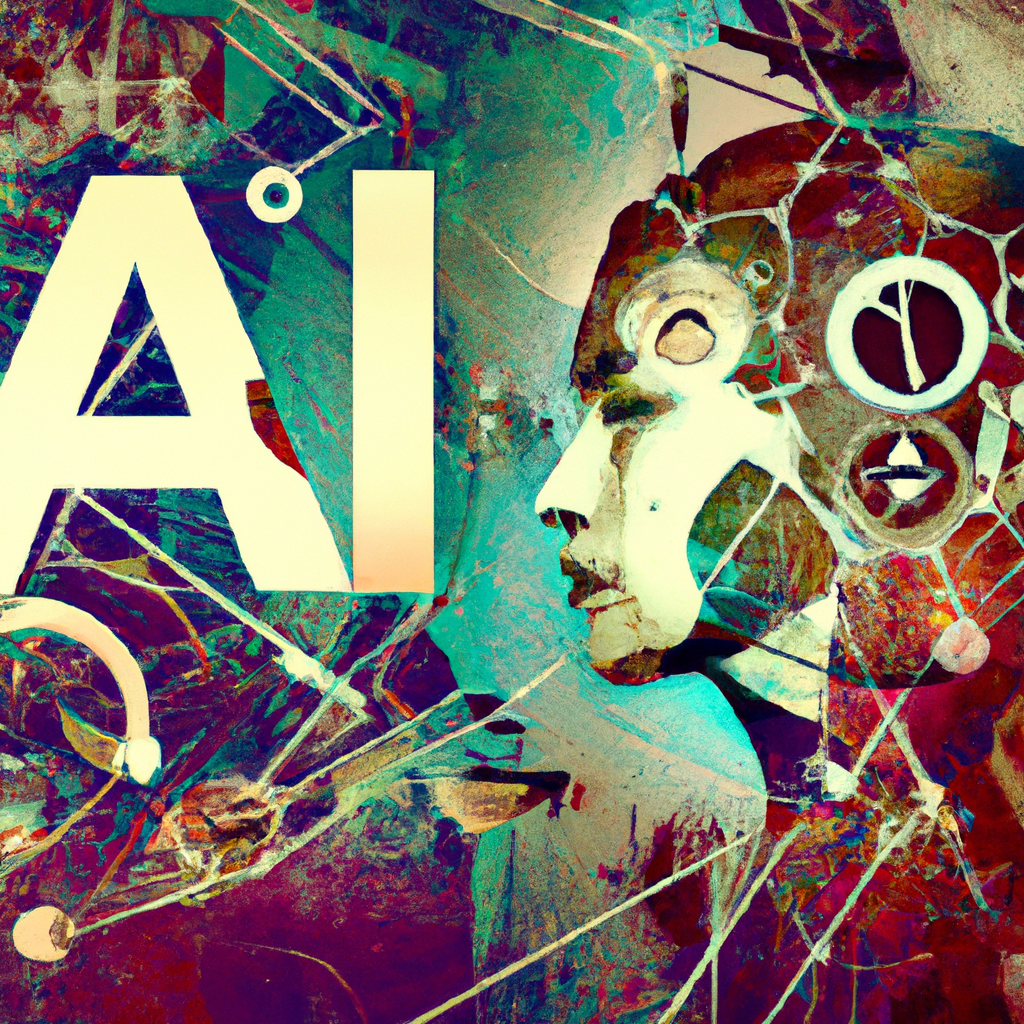
What are the advantages of using AI-generated art over traditional artwork in a corporate setting?
AI-generated art offers several advantages over traditional artwork in a corporate setting, reshaping the way businesses approach aesthetics and branding.
One of the key advantages is the ability to generate custom-made artwork. AI can be programmed to create art that aligns with a company’s brand aesthetics, including specific colors, themes, and styles. This level of customization is typically expensive and time-consuming with traditional artwork.
AI also offers scalability that traditional art cannot match. With AI, businesses can generate an infinite number of unique art pieces as per their requirements. This is particularly useful for companies with a vast digital presence or those that require regular updates to their visual content.
Moreover, AI-generated art can be updated and tweaked with ease. If a business changes its branding or wants to refresh its visual content, AI can quickly generate new artwork, keeping the aesthetics fresh and engaging.
Cost efficiency is another advantage. Traditional artwork, especially customized pieces, can be expensive. In contrast, AI can generate artwork at a fraction of the cost, making it an affordable option for businesses of all sizes.
In terms of sustainability, AI art comes out on top as it’s a digital medium that doesn’t require physical resources. This aligns with the growing focus on environmental sustainability in business practices.
Finally, AI art paves the way for interactive and experiential art experiences. AI can create artwork that changes based on data inputs or viewer interaction, offering an immersive experience that traditional artwork can’t provide.
To delve deeper into this topic, explore this article on NFT54.io.
How does the process of commissioning AI art work?
Commissioning AI art involves a series of steps that revolve around defining requirements, generating the art, and refining the output. The specifics of the process can vary based on the AI art provider.
Firstly, the client defines their requirements. This includes the desired colors, themes, style, and size. Some providers may also offer the option to specify the level of complexity or the amount of abstractness in the art.
The AI art generator then uses these inputs to create a unique piece of art. Advanced AI algorithms, often based on machine learning models like Generative Adversarial Networks (GANs), are used to generate the art.
Once the AI generates an initial piece, the client can review it and provide feedback. The AI can then make adjustments based on the feedback. This iterative process continues until the client is satisfied with the final artwork.
After the artwork is finalized, the AI art provider will provide a digital file of the artwork. Some providers also offer printing services, allowing the client to receive a physical print of the AI-generated art.
If the client intends to use the artwork commercially, they may also need to negotiate rights usage with the AI art provider. Some providers offer full commercial rights, while others may have restrictions on the use of the artwork.
In the case of NFT54.io, clients can also choose to tokenize their AI art and sell it as an NFT, providing a new avenue for monetization.
For a detailed insight into the AI art creation process, visit this page on NFT54.io.

What should businesses keep in mind when integrating AI art into their branding?
Integrating AI art into branding requires a thoughtful approach to ensure that it complements and enhances the brand’s visual identity. Here are some key considerations for businesses.
Firstly, the AI-generated art should align with the brand’s aesthetic. The colors, style, and themes of the art should resonate with the brand’s image and appeal to its target audience. The power of AI to customize art can be harnessed to achieve this alignment.
Next, the legal implications of using AI art should be understood. Given that AI art falls into a relatively new and evolving legal landscape, businesses should ensure they have the necessary rights to use the art commercially.
Consistency is another important aspect. The AI art used across different platforms and touchpoints should maintain a consistent look and feel. This contributes to better brand recognition and stronger brand identity.
Businesses should also consider the versatility of AI art. AI can generate different types of art – from abstract to hyper-realistic – and this versatility can be utilized to create a diverse yet cohesive visual narrative.
While AI art offers cost and scalability benefits, businesses should not compromise on quality. High-quality, aesthetically pleasing art is essential for making a strong visual impact.
Businesses should also consider the application of AI art beyond just aesthetics. For instance, AI art can be used for experiential marketing campaigns or interactive customer experiences.
Lastly, consider the source of the AI art. Working with a reputable AI art provider ensures that you receive high-quality art and proper commercial usage rights.
You can gain more insights into the debate surrounding AI in art on this page on NFT54.io.
How can businesses authenticate and validate the AI art they purchase?
Authenticating and validating AI art is crucial to ensure its originality and secure the rights of its usage. Several methods can be employed for this purpose.
One common method is through certificates of authenticity provided by the AI art provider. These certificates affirm that the artwork was generated by their specific AI and has not been replicated elsewhere.
Another method is through blockchain technology. When AI art is tokenized as NFTs, the blockchain records all transactions related to that art. This can be used to trace the art’s provenance, validating its authenticity.
In addition, some AI art providers use AI algorithms to validate the originality of the artwork. These algorithms compare the artwork with a database of existing art pieces to ensure it hasn’t been replicated.
Moreover, companies like NFT54.io offer AI Art Authentication services. These services use advanced techniques to verify the uniqueness and authenticity of AI-generated art.
Legal agreements can also be used for validation. When purchasing AI art, businesses can enter into agreements that affirm the authenticity of the art and provide them with the necessary usage rights.
To know more about AI’s role in the art industry, you can visit this page on NFT54.io.
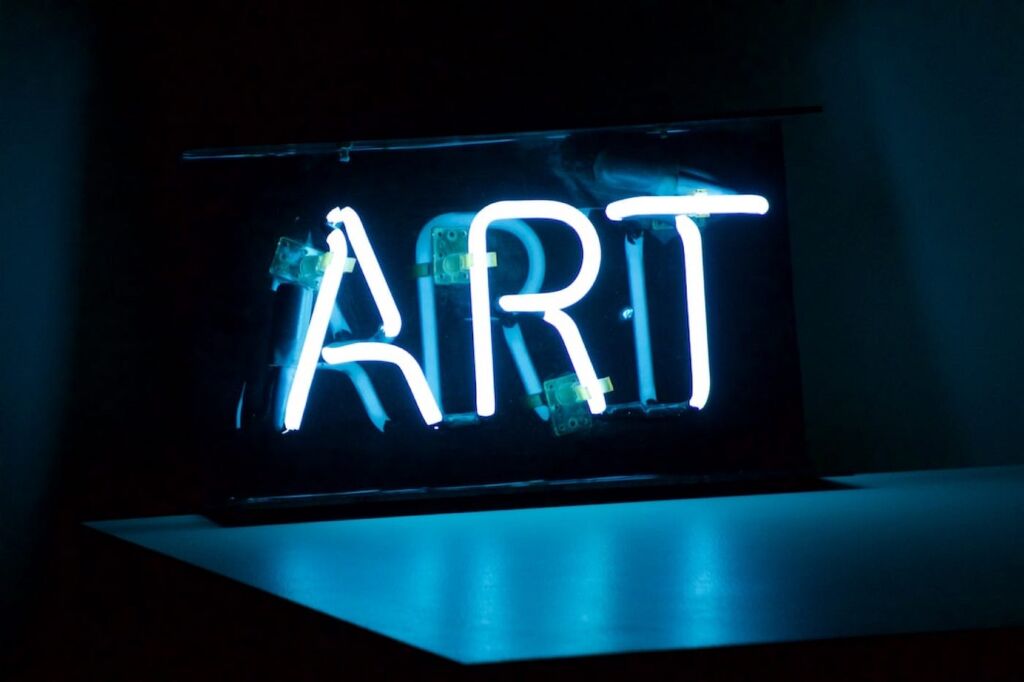
Are there legal considerations involved with using AI-generated art in business?
The emergence of AI-generated art has led to new legal considerations that businesses need to be aware of. Here are some key points:
Copyright: AI-generated art poses unique challenges to traditional copyright laws. While human-created art automatically gets copyright protection, it’s unclear whether AI-generated art can be copyrighted since it doesn’t involve human creativity.
Ownership: The ownership of AI-generated art can be complex. Depending on jurisdiction and specific circumstances, the owner could be the AI developer, the user who commissioned the art, or even the AI itself.
Commercial Use: Businesses need to ensure they have the rights to use AI-generated art for commercial purposes. This may involve negotiating a licensing agreement with the AI art provider.
Intellectual Property (IP) Protection: AI-generated art falls into a new and evolving area of IP law. Businesses should consult with IP lawyers to understand the implications and ensure they’re protecting their interests.
Liability: In cases where AI-generated art unintentionally infringes upon existing copyrights, businesses should understand their liability and potential legal consequences.
Privacy: If the AI uses personal data (like user photos) to generate art, businesses need to comply with data privacy laws.
Legal considerations can vary significantly by jurisdiction and specific use cases, so businesses should seek legal counsel to navigate these issues.
Further, businesses can learn about the controversy over AI art at this link on NFT54.io.
What are the ethical considerations when using AI-generated art?
The use of AI-generated art also raises several ethical questions that businesses should consider:
Authenticity: The authenticity of AI art, given that it’s machine-generated without creative intent, can be a subject of ethical debate. Businesses should be transparent about using AI-generated art and not misrepresent it as human-created.
Fairness: The use of AI art could potentially undermine human artists, especially if AI art is sold or used in the same contexts as human-created art. Businesses should consider how to use AI art ethically without harming the livelihoods of human artists.
Bias: AI models can sometimes replicate the biases present in their training data. If an AI art model is trained on Western art, for instance, its output may not reflect the diversity and inclusivity that many businesses aim to embody.
Data Privacy: If the AI uses personal data to generate art, it’s essential to respect privacy rights and use the data ethically.
Quality: While AI can produce visually striking art, it can also create nonsensical or inappropriate output. Businesses must ensure the quality and appropriateness of AI-generated art used in a professional context.
You can dive deeper into these ethical considerations and the unexpected impact of AI on art at this link on NFT54.io.
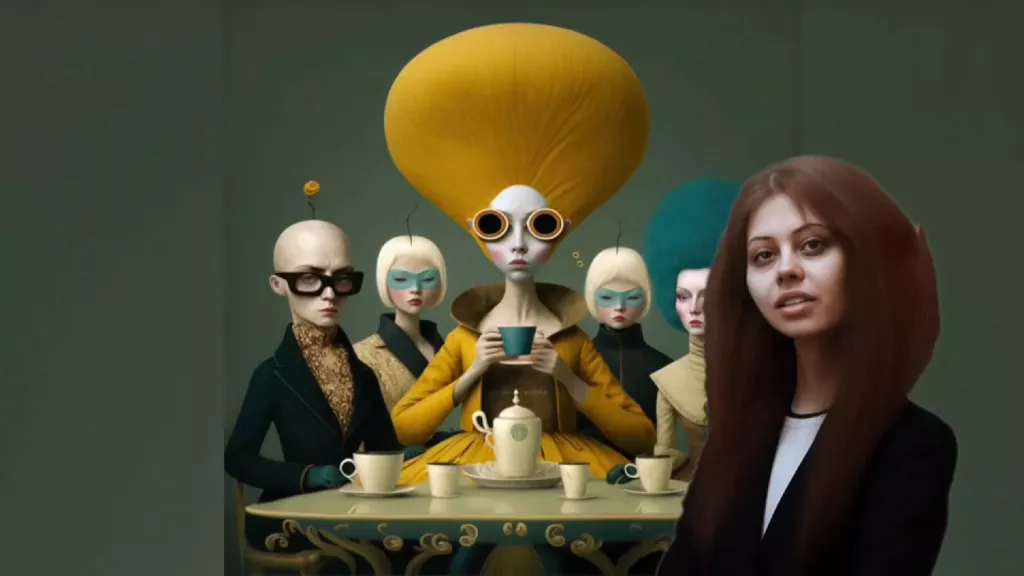
| Question | Summary |
|---|---|
| How can AI art enhance corporate aesthetics and branding? | AI art infuses a modern vibe into a brand, helps maintain fresh aesthetics, creates emotional connection with audience, and can project an innovative image of the company. |
| How can entrepreneurs leverage AI art for their businesses? | AI art offers personalization, versatility, scalability, emotional engagement, brand appeal, and opportunities for new business models. |
| What kind of AI business solutions are available through NFT54.io? | NFT54.io offers AI Art Generator, platform for NFTs, AI Art Authentication service, consulting service, workshops and training programs on AI art, applications in advertising and marketing, and AI Art for Interior Design service. |
| How is AI art influencing the future of corporate art? | AI art democratizes corporate aesthetics, drives sustainability, enables interactive and experiential art, and opens up a new marketplace in the form of NFTs. |
| Can AI art generation contribute to innovation in business strategies? | AI art can offer personalization in marketing, inspire product development, open up opportunities for new business models, enhance social media marketing, drive community-building efforts, and contribute to brand innovation. |
| What are the advantages of using AI-generated art over traditional artwork in a corporate setting? | AI-generated art offers customization, scalability, cost efficiency, sustainability, and interactive and experiential art experiences. |
| How does the process of commissioning AI art work? | The process involves defining requirements, generating the art using AI, refining the output based on client feedback, and providing a digital file of the artwork. |
| What should businesses keep in mind when integrating AI art into their branding? | Key considerations include alignment with brand's aesthetic, understanding of legal implications, consistency, versatility, quality, beyond aesthetics applications, and source of the AI art. |
| How can businesses authenticate and validate the AI art they purchase? | Authentication methods include certificates of authenticity, blockchain technology, AI algorithms for validation, legal agreements, and services like AI Art Authentication by NFT54.io. |
| Are there legal considerations involved with using AI-generated art in business? | Considerations include copyright, ownership, commercial use, intellectual property protection, liability, and privacy. |
| What are the ethical considerations when using AI-generated art? | Ethical considerations include authenticity, fairness, bias, data privacy, and quality. |
Frequently Asked Questions
How can AI art enhance corporate aesthetics and branding?
AI art can create a unique, contemporary aesthetic for your brand that aligns with your brand’s colors, style, and themes. This can enhance your corporate aesthetics and reinforce your brand’s message.
How can entrepreneurs leverage AI art for their businesses?
Entrepreneurs can use AI art for personalization, creating versatile applications, keeping their visual content fresh and engaging, creating an emotional connection with the target audience, and opening up opportunities for new business models.
What kind of AI business solutions are available through NFT54.io?
NFT54.io offers solutions like AI Art Generator, a platform for buying and selling NFTs, AI Art Authentication service, consulting services, workshops and training programs on AI art, applications in advertising and marketing, and AI Art for Interior Design service.
How is AI art influencing the future of corporate art?
AI art is democratizing corporate aesthetics, offering versatility, driving sustainability, allowing for interactive and experiential art experiences, and opening up a new marketplace in the form of NFTs.
Can AI art generation contribute to innovation in business strategies?
Yes, AI art can offer a new level of personalization in marketing, inspire product development, open up opportunities for new business models, enhance social media marketing, drive community-building efforts, and contribute to brand innovation.
What are the advantages of using AI-generated art over traditional artwork in a corporate setting?
Advantages include the ability to generate custom-made artwork, scalability, cost-efficiency, sustainability, and the potential for interactive and experiential art experiences.
How does the process of commissioning AI art work?
The process involves defining requirements, generating the art using AI, refining the output based on client feedback, and providing a digital file of the artwork.
What should businesses keep in mind when integrating AI art into their branding?
Businesses should ensure the AI art aligns with the brand’s aesthetic, understand the legal implications, maintain consistency, consider the versatility of AI art, not compromise on quality, consider applications beyond aesthetics, and choose a reputable source for the AI art.
How can businesses authenticate and validate the AI art they purchase?
Businesses can use certificates of authenticity, blockchain technology, AI algorithms for validation, legal agreements, and services like AI Art Authentication by NFT54.io.
Are there legal and ethical considerations involved with using AI-generated art in business?
Yes, considerations include copyright, ownership, commercial use, intellectual property protection, liability, privacy, authenticity, fairness, bias, data privacy, and quality.
